 W
WBuffalo Soldiers originally were members of the 10th Cavalry Regiment of the United States Army, formed on September 21, 1866, at Fort Leavenworth, Kansas. This nickname was given to the Black Cavalry by Native American tribes who fought in the Indian Wars. The term eventually became synonymous with all of the African-American regiments formed in 1866:9th Cavalry Regiment 10th Cavalry Regiment 24th Infantry Regiment 25th Infantry Regiment Second 38th Infantry Regiment
 W
WAllen Allensworth, born into slavery in Kentucky, escaped during the American Civil War and became a Union soldier; later he became a Baptist minister and educator, and was appointed as a chaplain in the United States Army. He was the first African American to reach the rank of lieutenant colonel. He planted numerous churches, and in 1908 founded Allensworth, California, the only town in the state to be founded, financed and governed by African Americans.
 W
WEdward Lee Baker Jr. was an African-American United States Army Captain who received the Medal of Honor for actions during the Spanish–American War. While under fire, he rescued a wounded soldier from drowning.
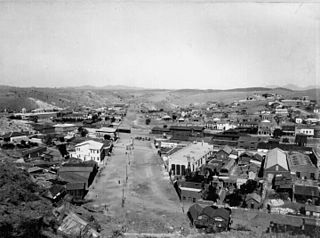 W
WThe Battle of Ambos Nogales, or as it is known in Mexico La batalla del 27 de agosto, was an engagement fought on 27 August 1918 between Mexican military and civilian militia forces and elements of U.S. Army troops of the 35th Infantry Regiment, who were reinforced by the Buffalo Soldiers of the 10th Cavalry Regiment, and commanded by Lt. Col. Frederick J. Herman. The American soldiers and militia forces were stationed in Nogales, Arizona, and the Mexican soldiers and armed Mexican militia were in Nogales, Sonora. This battle was notable for being a significant confrontation between U.S. and Mexican forces during the Border War, which took place in the context of the Mexican Revolution and the First World War.
 W
WThe Battle of the Saline River in August 1867 was one of the first recorded combats of the Buffalo Soldiers of the U.S. 10th Cavalry. This battle occurred 25 miles northwest of Fort Hays in Kansas near the end of August 1867.[see discussion]
 W
WThe Battle of Bear Valley was a small engagement fought in 1918 between a band of Yaquis and a detachment of United States Army soldiers. On January 9, 1918, elements of the American 10th Cavalry Regiment detected about thirty armed Yaquis in Bear Valley, Arizona, a large area that was commonly used as a passage across the international border with Mexico. A short firefight ensued, which resulted in the death of the Yaqui commander and the capture of nine others. Though the conflict was merely a skirmish, it was the last time the United States Army engaged hostile Native Americans in combat and thus has been seen as the final official battle of the American Indian Wars.
 W
WDennis Bell was a Buffalo Soldier in the United States Army and a recipient of America's highest military decoration—the Medal of Honor—for his actions in the Spanish–American War.
 W
WJohn Bigelow Jr. was a United States Army lieutenant colonel. He was the subject of many articles on military frontier life in Outing Magazine published by his brother Poultney Bigelow and with sketches drawn in the field by the then young and obscure Frederic Remington. The book Frontier Cavalryman is based on his journals and service with the Buffalo Soldiers. He received a Silver Star and a Purple Heart for his actions in Cuba. He was assigned as a superintendent of Yosemite National Park in early 1904 and retired from the Army the following September. He became a teacher at the Massachusetts Institute of Technology and later an author of several books. He was recalled to active duty in World War I and served in Washington, District of Columbia until 1919. He retired again and died in 1936 at age 81.
 W
WThe Bisbee Riot, or the Battle of Brewery Gulch, occurred during the Red Summer on July 3, 1919, between the black Buffalo Soldiers of the 10th Cavalry and members of local police forces in Bisbee, Arizona. Following an incident between a military policeman and some of the Buffalo Soldiers, the situation escalated into a street battle in Bisbee's historic Brewery Gulch. At least eight people were seriously injured, and fifty soldiers were arrested, although the consequences of this skirmish were relatively minor compared to others during the summer of 1919.
 W
WCaptain Lewis Cunningham Broadus (1877–1961) was a Buffalo Soldier born in Henrico County, Virginia, who served his country with distinction in the 25th Infantry Regiment and the 92nd Division of the United States Army. He served from 1897 to 1923, and was a veteran of the Indian Wars, Spanish–American War, Philippine–American War, Border War, and World War I.
 W
WThe Brownsville affair, or the Brownsville raid, was an incident of racial discrimination that occurred in 1906 in the southwestern United States due to resentment by white residents of Brownsville, Texas, of the Buffalo Soldiers, black soldiers in a segregated unit stationed at nearby Fort Brown. When a white bartender was killed and a white police officer wounded by gunshots one night, townspeople accused the members of the African-American 25th Infantry Regiment. Although their commanders said the soldiers had been in the barracks all night, evidence was allegedly planted against the men.
 W
WThe Buffalo Soldier tragedy of 1877, also known as the Staked Plains Horror, occurred when a combined force of Buffalo Soldier troops of the 10th Cavalry and local buffalo hunters wandered for five days in the near waterless Llano Estacado region of north-west Texas and eastern New Mexico during July of a drought year, where four soldiers and one buffalo hunter died.
 W
WGeorge Ritter Burnett was a United States Army officer who received the U.S. military's highest decoration, the Medal of Honor.
 W
WLouis Henry Carpenter was a United States Army brigadier general and a recipient of the Medal of Honor for his actions in the American Indian Wars.
 W
WJohn Denny was a Buffalo Soldier in the United States Army and a recipient of America's highest military decoration—the Medal of Honor—for his actions in the Indian Wars of the western United States.
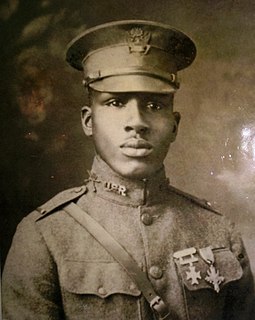 W
WAaron R. Fisher of Lyles Station, Indiana, served more than thirty years in the U.S. Army (1911–47) and was a recipient of several military awards, most notably the Distinguished Service Cross and Purple Heart from the United States and the Croix de Guerre with gold star from the French government for his heroism in battle, while serving as a second lieutenant during World War I. In addition Fisher was awarded a U.S. Army Commendation Medal for eleven and a half years of service with the Reserve Officers' Training Corps unit at Wilberforce University. Fisher was promoted to chief warrant officer in 1942 and retired from the military in 1947. Fisher spent his final years in Xenia, Ohio, where he was a civilian employee at Wright-Patterson Air Force Base, and died on November 22, 1985. His remains are buried at Valley View Memorial Gardens near Xenia.
 W
WHenry Ossian Flipper was an American soldier, engineer, former slave and in 1877, the first African American to graduate from the United States Military Academy at West Point, earning a commission as a second lieutenant in the United States Army. He was also an author who wrote about scientific topics and his life experiences.
 W
WThe Fort Bayard Historic District encompasses the area that was the location of Fort Bayard, a United States Army military installation north of present-day Santa Clara, New Mexico. Founded in 1866, the fort at first provided security against Native American attacks on settlers during the settlement of the region in the 19th century. It was then converted into the army's first tuberculosis sanitarium, and later became a VA hospital. The property is now the Fort Bayard Medical Center, a long-term nursing care facility operated by the state of New Mexico. The only surviving 19th-century elements of the fort are some of its landscaping, and the Fort Bayard National Cemetery. The site was designated a National Historic Landmark District in 2004.
 W
WThe Battle of Fort Tularosa occurred in May 1880 near the present-day town of Aragon in Catron County, New Mexico. In an ongoing campaign to keep from being forced to live on reservations, Chiricahua Apache warriors led by Victorio attacked Fort Tularosa north of San Francisco Plaza. Buffalo Soldiers from the United States Army's 9th Cavalry, led by Sergeant George Jordan, repulsed the attack.
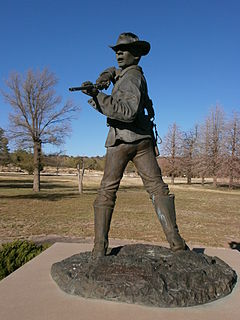 W
WClinton Greaves was a Buffalo Soldier in the United States Army and a recipient of America's highest military decoration—the Medal of Honor—for his actions in the Indian Wars of the western United States.
 W
WBenjamin Henry Grierson was a music teacher, then a career officer in the United States Army. He was a cavalry general in the volunteer Union Army during the Civil War and later led troops in the American Old West. He is most noted for Grierson's Raid, an 1863 expedition through Confederate-held territory that severed enemy communication lines between Vicksburg, Mississippi and Confederate commanders in the Eastern Theater. After the war he organized and led the Buffalo Soldiers of the 10th Cavalry Regiment from 1866 to 1890.
 W
WEdward Hatch was a career American soldier who served as a general in the Union Army during the American Civil War. After the war he became the first commander of the 9th U.S. Cavalry Regiment, a Buffalo soldier regiment with African-American troops commanded by white officers.
 W
WThe Battle of Hembrillo Basin was fought April 5-8, 1880 between the United States Army against a combined band of Chiricahua and Mescalero Apaches led by Chief Victorio. Hembrillo Basin was the largest battle of Victorio's War, although casualties were light on both sides. Victorio held off an attack by superior numbers of army soldiers and Indian scouts, evacuated his women and children from the battlefield, and withdrew successfully. Hembrillo Basin is located on the White Sands Missile Range and access by the public is strictly regulated.
 W
WGuy Vernor Henry was a military officer and Medal of Honor recipient who served as an early Governor of Puerto Rico.
 W
WJohn Lester Johnson was an American professional boxer and actor. He is perhaps best known for his 1916 boxing match against Jack Dempsey, and his 1933 performance as Bumbo, the titular character in the Our Gang comedy short The Kid From Borneo.
 W
WHenry Johnson was a Buffalo Soldier in the United States Army and a recipient of America's highest military decoration—the Medal of Honor—for his actions in the Indian Wars of the western United States.
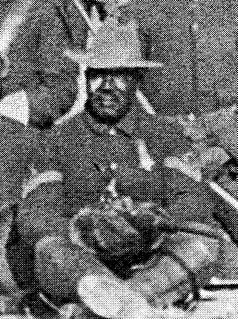 W
WGeorge Jordan was a Buffalo Soldier in the United States Army and a recipient of America's highest military decoration—the Medal of Honor—for his actions in the Indian Wars of the western United States.
 W
WRanald Slidell Mackenzie, also called Bad Hand, was a career United States Army officer and general in the Union Army during the American Civil War. He was described by General Ulysses S. Grant as its most promising young officer. He also served with great distinction in the following Indian Wars.
 W
WMark Matthews was an American veteran of the Second World War and a Buffalo Soldier. Born in Alabama and growing up in Ohio, Matthews joined the 10th Cavalry Regiment when he was only 15 years old, after having been recruited at a Lexington, Kentucky racetrack and having documents forged so that he appeared to meet the minimum age of 17. While stationed in Arizona, he joined General John J. Pershing's Mexico expedition to hunt down Mexican general Pancho Villa. He was later transferred to Virginia, where he took care of President Roosevelt and First Lady Eleanor's horses and was a member of the Buffalo Soldiers' drum and bugle corps. In his late 40s, he served in combat operations in the South Pacific during World War II and achieved the rank of first sergeant. He was noted as an excellent marksman and horse showman.
 W
WIsaiah Mays was a Buffalo Soldier in the United States Army and a recipient of America's highest military decoration—the Medal of Honor—for his actions during the Wham Paymaster Robbery in Arizona Territory.
 W
WWilliam McBryar was a bi-racial Buffalo Soldier in the United States Army and a recipient of America's highest military decoration, the Medal of Honor, for his actions during the Cherry Creek Campaign in Arizona Territory.
 W
WNicholas Merritt Nolan was a United States Army major. An Irish immigrant, he began his military career in New York on December 9, 1852 with the 4th Artillery and subsequently served in New York's 2nd Dragoons. He enlisted as a private and rose through the ranks becoming a First Sergeant. He was commissioned an officer in late 1862 in the Regular Army while serving with the 6th U.S. Cavalry Regiment during the American Civil War. He participated in sixteen campaigns with the 6th and most of its battles. He was slightly wounded at the Battle of Fairfield and seriously wounded at the Battle of Dinwiddie Court House. He was brevetted twice and noted at least twice for gallantry during combat. He was slightly wounded when captured at the end of March 1865 and was later paroled. After the Civil War he served with the 10th U.S. Cavalry known as the Buffalo Soldiers for fourteen years. Nolan is also noted for his pluses and minuses during the Buffalo Soldier tragedy of 1877 that made headlines in the Eastern United States of America. He was the commanding officer of Henry O. Flipper in 1878, the first African American to graduate from the United States Military Academy at West Point. He commanded several frontier forts before his untimely death in 1883.
 W
WJules Garesche "Gary" Ord was a United States Army First Lieutenant who was killed in action after leading the charge of Buffalo Soldiers of the 10th U.S. Cavalry up San Juan Hill. History now records that Ord was responsible for the "spontaneous" charge that took the San Juan Heights during the Spanish–American War in Cuba on July 1, 1898.
 W
WThe Battle of Parral, on April 12, 1916, was the first battle between soldiers of Venustiano Carranza, known as Carrancistas, and the United States military during the Mexican Expedition. When a small force of American cavalry was leaving the city of Parral, in the Mexican state of Chihuahua, a superior force of Carrancista soldiers attacked which resulted in a bloody running engagement. Using a strategy of organized withdrawal, the Americans were able to repulse the Mexican attacks and safely escape to the fortified village of Santa Cruz de Villegas.
 W
WGeneral of the Armies John Joseph "Black Jack" Pershing was a senior United States Army officer. He served most famously as the commander of the American Expeditionary Forces (AEF) on the Western Front in World War I, 1917–18.
 W
WHenry Vinton Plummer was an American Baptist preacher and chaplain with the United States Army Buffalo Soldiers. Born a slave on a plantation near Bowie, Maryland, he escaped slavery in his early 20s and enlisted in the Union Navy during the American Civil War. He served as a pastor at several churches before being appointed chaplain of the 9th Cavalry Regiment by President Chester A. Arthur in 1884. At that time, he was the only black officer in the US Army. In 1894 he was dishonorably discharged from the Army for drunkenness and poor conduct, but his discharge was upgraded to honorable after a review in 2005.
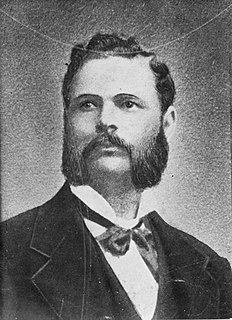 W
WThomas Shaw was a Buffalo Soldier in the United States Army and a recipient of America's highest military decoration – the Medal of Honor – for his actions in the Indian Wars of the western United States.
 W
WSoul Soldier is a 1970 blaxploitation Western film. The film was initially produced by Hirschman-Northern Productions under the working title Men of the Tenth. After it was filmed on 16 mm film and released under the title The Red, White, and Black, producer Stuart Hirschman asked John Cardos to salvage the film, and Cardos, after looking at the existing footage, insisted that the entire film needed to be reshot in 35mm film. Cardos directed the reshoot, which was entirely shot on an Arriflex 35 IIC. Richard Dix's son Robert Dix appears in the film as a Native American warrior. Isabel Sanford portrays the character Isabel Taylor. Janee Michelle and Robert DoQui share nude sex scenes in the film. Rafer Johnson, who had won medals as a decathlete at the Olympic Games, starred in the film and intended to use all the money he earned from acting in the film to start his own film company. The financial success of the film led to the production of several other films in the genre. When the film was released on home video, it was renamed Buffalo Soldier.
 W
WTheophilus Gould Steward was an American author, educator, and clergyman. He was a U.S. Army chaplain and Buffalo Soldier of 25th U.S. Colored Infantry.
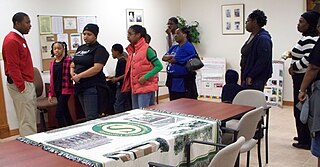 W
WThe Tangipahoa African American Heritage Museum & Veterans Archives is a museum on Phoenix Square in Hammond, Louisiana.
 W
WWilliam H. Thompkins was a Buffalo Soldier in the United States Army and a recipient of America's highest military decoration—the Medal of Honor—for his actions in the Spanish–American War.
 W
WAugustus Walley was a Buffalo Soldier in the United States Army and a recipient of America's highest military decoration—the Medal of Honor—for his actions in the Indian Wars of the western United States.
 W
WThe Wham Paymaster robbery was an armed robbery of a United States Army paymaster and his escort on May 11, 1889, in the Arizona Territory. Major Joseph W. Wham was transporting a payroll consisting of more than US$28,000 in gold and silver coins from Fort Grant to Fort Thomas when he and his escort of eleven Buffalo Soldiers were ambushed. During the attack, the bandits wounded eight of the soldiers, forced them to retreat to cover and stole the payroll. As a result of their actions under fire, Sergeant Benjamin Brown and Corporal Isaiah Mays were awarded the Medal of Honor while eight other soldiers received a Certificate of Merit. Eleven men, most from the nearby Mormon community of Pima, were arrested, with eight of them ultimately tried on charges of robbery. All of the accused were found not guilty, and the stolen money has never been recovered.
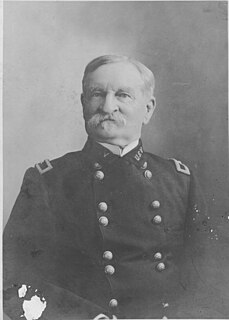 W
WSamuel M. Whitside was a United States Cavalry officer who served from 1858 to 1902. He commanded at every level from company to department for 32 of his 43 years in service, including Army posts such a Camp Huachuca, Jefferson Barracks, and Fort Sam Houston, the Departments of Eastern Cuba and Santiago and Puerto Principe, Cuba, commanded a provisional cavalry brigade, a squadron in the 7th Cavalry Regiment, and a troop and platoon in the 6th Cavalry Regiment. The pinnacle of his career was serving as the commanding general of the Department of Eastern Cuba before retiring in June 1902 as a brigadier general in the U.S. Army.
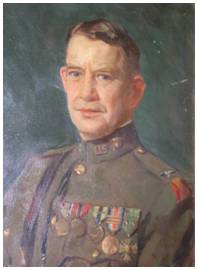 W
WWarren Webster Whitside was a career U.S. Army colonel who served as a Cavalry and Quartermaster officer. He was posthumously inducted into the Quartermaster Hall of Fame in 2010.
 W
WCathay Williams was an African-American soldier who enlisted in the United States Army under the pseudonym William Cathay. She was the first Black woman to enlist, and the only documented woman to serve in the United States Army posing as a man.
 W
WMoses Williams was a Buffalo Soldier in the United States Army and a recipient of America's highest military decoration—the Medal of Honor—for his actions in the Indian Wars of the western United States.
 W
WBrent Woods was an African American Buffalo Soldier in the United States Army and a recipient of America's highest military decoration—the Medal of Honor—for his actions in the Indian Wars of the western United States.
 W
WThe Yaqui Uprising, also called the Nogales Uprising, was an armed conflict that took place in the Mexican state of Sonora and the American state of Arizona over several days in August 1896. In February, the Mexican revolutionary Lauro Aguirre drafted a plan to overthrow the government of President Porfirio Díaz. Aguirre's cause appealed to the local Native Americans, such as the Yaqui, who organized an expedition to capture the customs house in the border town of Nogales on August 12.
 W
WCharles Young was an American soldier. He was the third African-American graduate of the United States Military Academy, the first black U.S. national park superintendent, first black military attaché, first black man to achieve the rank of colonel in the United States Army, and highest-ranking black officer in the regular army until his death in 1922.